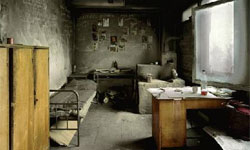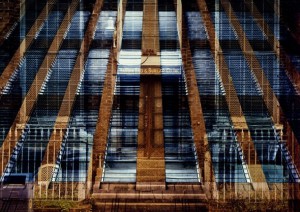 Andrew Moore is an American photographer who hails from New York. Born in 1957, he has been working all over the world. Moore has over the last 30 years of so traveled across the world photographing derelict and disused buildings like theatres, capturing the moments that nature stakes its claim on their devastated grandeur. His work is full of a narrative complexity that not only displays the abandonment and solitude of the places that were once bustling, but also depicting a glimmer of hope in the beauty they once had.
Andrew Moore is an American photographer who hails from New York. Born in 1957, he has been working all over the world. Moore has over the last 30 years of so traveled across the world photographing derelict and disused buildings like theatres, capturing the moments that nature stakes its claim on their devastated grandeur. His work is full of a narrative complexity that not only displays the abandonment and solitude of the places that were once bustling, but also depicting a glimmer of hope in the beauty they once had.One of his notable photographs is that of the Michigan Central Station in southwest Detroit. It was once the disembarkation point for migrants seeking employment in the city’s motor vehicle factories. Nowadays, it is now a pale shadow of its former glory, with the last train having left the station back in 1988. In a picture that Moore took of it in 1998, the station’s waiting room that was once opulent now looks as if it was abandoned centuries ago. Its defaced pillars made of marble appear ancient, while debris and fallen tiles look like moon rocks peeking through a stained white blanket of snow.
Unlike the pictures he took in Havana and Russia, Moore’s photos of Detroit are mostly devoid of people, providing them with a post apocalyptic eerie feel. Among files scattered across a shuttered police station are evidence charts from a homicide investigation. Test tubes and beakers line the shelves of a former school’s chemistry lab, waiting for students that will never arrive. At a depository for school books, birch saplings shoot from rotting textbooks. A vacated home is engulfed whole by foliage, while neighborhoods that were once bustling are now dissolved into urban prairie.

A native of Connecticut, Andrew Moore moved to New York City in 1980, living in lower Manhattan near John and South Streets. During nights, he would wader across the neighborhoods taking photos of the South Street Seaport construction, which he claims kindled an interest in documenting living in flux. He loves places undergoing transformation, the process of changing and becoming.
Eventually, Moore expanded his vision to places like Vietnam and Bosnia. He claims to have a perpetual fascination with certain types of decayed spaces that have been reused or re -appropriated. He also likes where evidence exists of people struggling to maintain their dignity, and abandoned places that retain the ghosts of what they used to be. One of such places that he captures on camera is a dilapidated opera house in Havana, which is now a garage for bicycles and taxis.
It was the central role played by Detroit in creating modern life that initially lured him to it as potential subject matter. He spent some time there working as a film producer and cinematographer. However, he was not aware of the scope of the city’s abandonment, with so many derelict buildings ranging from immense factories to pre-war skyscrapers to ornate movie theaters. Although there is a lot of rubble in the Detroit photos, Moore’s works of art usually escape the genre’s narrow constraints.
